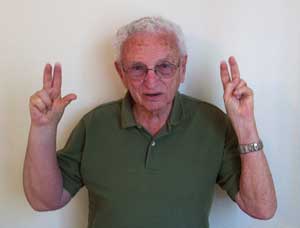 By a meta-log I mean a written device which identifies a word or a phrase for a comment and does not involve the meaning of the word or phrase. In a sentence this means that the subject of the sentence is not what the word denotes, but that the word is an object for discussion. It can occur when I talk with others about how a particular word or a phrase is being used in ordinary speech, or in writing, as when an author is discussing how a word or a phrase has been used by another person.
By a meta-log I mean a written device which identifies a word or a phrase for a comment and does not involve the meaning of the word or phrase. In a sentence this means that the subject of the sentence is not what the word denotes, but that the word is an object for discussion. It can occur when I talk with others about how a particular word or a phrase is being used in ordinary speech, or in writing, as when an author is discussing how a word or a phrase has been used by another person.
The prefix *meta*, was used by Aristotle (c. 360 BC) to refer to a topic in retrospect. *Metaphysics* therefore was a discussion about material matters he had studied, a reflection about its first principles. It could be translated as “after physics”, or “thinking about physics”. Over successive the centuries the meaning of the word Metaphysics shifted substantially so that most people now equate it with “Pure Philosophy” as distinct from its specific areas, say, Logic, Political Philosophy, Ethics, Aesthetics. *Meta* as here used has been combined with *log*, as in *meta-log* and has been assigned a distinct, unambiguous meaning: a way of identifying words, phrases, even sentences when these are being talked about, or discussed — that is, are the subjects of a thought — and are not used in their normal, denotative way.
A problem arises however, when talking, speaking or lecturing, and not writing particularly in the latter situation, when lecturing. The speaker may wish to talk about a concept and in order to retain the interest of his audience, he raises or lowers his voice, adjust its volumes, perhaps also gesticulates in various emphatic ways: raising eyebrows, wrinkling his nose, looking skywards (a sign of desperation perhaps) and — using gestures like marching up and down the stage, or raising his hands to show the importance of what is being discussed. All these are aids which he hopes enlivens his presentation, give emphasis to particularly ideas, maintains the interest of the audience. We can refer to the lecturer punctuating his material, bringing it to the attention of the audience, making certain items more memorable.
One widely used gesture which shows that something is being quoted from another source, is to raise one’s hand, extend two fingers and rapidly flap these. These are air quotes (shown above) — visual quotation marks! It shows that the words are a quotation, or refers to a concept which is widely used but which does not necessarily meet with the approval of the speaker himself. For years I used this sign whenever I used the word *instinct*, a term anathema to me at the time. The term is almost without meaning within contemporary academic psychology and, although widely used by the English speaking followers of Freud, it is a poor translation of the German word *Trieb* which means an impetus, or inchoate driving force. The term *instinct* on the other hand, as was used by some biologists at the turn of the 20th century, referred to an action pattern which was believed to be unlearned — that is, its origins were unknown — but is within the repertoire of an animal through a genetic (again, unknown) process. It was re-introduced by Konrad Lorenz and N. Tinbergen in the 1940’s but in a different sense to its earlier use. This simply added to the confusion. Tinbergen often referred to innate action patterns although his famous book was called A Study of Instinct (1951).
But we also need a gesture to indicate that a term or expression is not a quotation from some existing text, but is a topic under discussion. If the subject refers to a fictitious event or something which is likely to confuse an audience, it has been customary to place it in gestural-quotes. My favorite example: the bandersnatch ( see Lewis Carroll’s Alice in Wonderland). Once an audience accepts the bandersnatch as a fictitious animal, which has been given an incoherent description in the poem “The Jabberwocky”, there is no need to place it in quotation marks, or give it any distinctive marking: the reader and an audience is now well prepared and is therefore unlikely to get confused. But when one wishes to discuss this “animal” and others of a similar nature, the discussion becomes “meta-talk” and one may wish to indicate this by using a distinct marker — or meta-log. In writing the meta-log I have suggested on an earlier occasion is *x*, where x refers to the object under discussion, whereas when an idea is involved which requires more than a label but an expression, we can use *xyz*. Time will tell what conventions will get adopted.
In speech, or when speaking, I propose to use a sign which is easy to use to indicate that we are in “meta-talk” mode, that is talking about a concept. The sign involves raising both hands in clinched form to shoulder level, then quickly stabbing the air with both forefingers thrust forward, like an adder on the attack. The gesture is the same whether using a single word or a whole phrase. The audience will very quickly learn what meaning is being conveyed and distinguish a quotation from a comment about the status of a concept!
